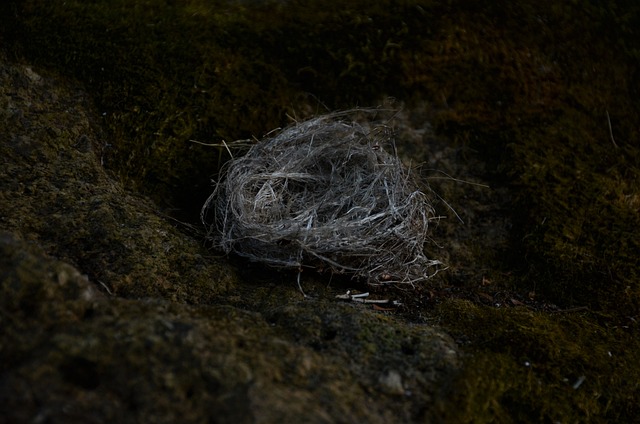In urban areas, professional, licensed services are crucial for humane bird nest removal due to legal protections and complex circumstances surrounding bird habitats. DIY methods are risky and inadequate. These specialists navigate laws, employ suitable tools, and minimize environmental disruption, especially for protected species or hard-to-reach nests. Their expertise ensures birds' safety, maintains their natural cycles, and adheres to conservation guidelines, contributing to broader environmental preservation efforts. This step-by-step guide highlights a legal and humane process involving assessment, permitting, planning, removal, and relocation, protecting both birds and relocators while preserving habitats.
In the realm of avian conservation, understanding when and how to relocate bird nests is crucial. While it may seem like a simple task, proper relocation requires meticulous care to ensure the safety and well-being of these delicate habitats. This article explores the significance of licensed specialists in the process of humane bird nest removal, detailing their expertise and the step-by-step procedures they employ. By adhering to best practices, we can prevent harm while fostering responsible bird conservation.
Understanding Bird Nest Relocation: Why Professional Help is Essential
Bird nest relocation, a seemingly simple task, often requires professional expertise for legal and safe execution, especially in urban areas. While some may attempt do-it-yourself methods, the potential risks far outweigh the benefits. Bird nests, particularly those built on structures like buildings, bridges, or utility poles, can be legally protected by various regional and national laws, making their removal a complex process.
Professional licensed specialists in humane bird nest removal are equipped to navigate these legalities and ensure the safety of both the birds and the environment. They possess the necessary tools and knowledge to assess the situation, determine the best course of action, and handle the relocation process with minimal disruption to the bird’s natural habitat and behavior. This expertise is crucial, especially when dealing with protected species or nests located in inaccessible areas.
The Role of Licensed Specialists in Humane Bird Nest Removal
When it comes to humane bird nest removal, licensed specialists play a pivotal role in ensuring the safe and ethical relocation of birds. These professionals are equipped with the knowledge and skills necessary to handle various bird species, their unique behaviors, and nesting habits. They understand that birds have complex needs, including specific temperature requirements, protective barriers, and minimal disturbance during the process.
Licensed specialists employ specialized techniques and tools tailored to each bird nest situation. They carefully assess the nest’s location, structure, and potential hazards before planning a removal strategy. This meticulous approach guarantees that both the birds and their nests are treated with the utmost care and respect. By adhering to strict guidelines and regulations, these experts contribute to conservation efforts while mitigating potential risks associated with bird nest relocation.
Step-by-Step Process for Safe and Legal Nest Relocation
Relocating a bird’s nest requires careful consideration and expertise to ensure both the safety of the birds and compliance with local laws. Here’s a step-by-step guide for a legal and humane bird nest removal process:
1. Identify and Assess: Begin by identifying the type of bird nesting in your area and understanding their legal status. Next, assess the nest’s accessibility and condition. Look for eggs or young birds to determine if immediate action is necessary. Note the location of the nest and any nearby structures or hazards that could impact relocation.
2. Obtain Necessary Permits: Before proceeding, obtain the required permits from local wildlife authorities. Different species and locations have specific regulations. These permits ensure you’re operating within legal boundaries and help protect both the birds and the relocators from potential penalties.
3. Plan the Relocation: Choose a suitable relocation site that matches the original habitat as closely as possible. Ensure it’s safe, away from predators, and provides adequate cover. Prepare necessary equipment like soft containers or boxes, netting, and gloves to protect both the birds and yourself. Schedule the relocation for a time when parents are less likely to be present, typically after the young have fledged.
4. Carefully Remove the Nest: Wearing protective gear, gently enter the nesting area and carefully remove the nest. Place it in a container with soft materials to avoid harming any eggs or chicks hidden within. Keep the nest cool and calm during transport to minimise stress.
5. Relocate and Reinstall: Transport the nest to the new site promptly. Reinstall it in a similar orientation, ensuring it’s secure and stable. Return any fallen feathers or materials to maintain the natural appearance of the nest.
Preventing Harm: Best Practices for Responsible Bird Conservation
Preventing harm is a cornerstone of responsible bird conservation, and when it comes to bird nest relocation, licensed specialists play a vital role in ensuring the safety and well-being of these avian inhabitants. Humane bird nest removal techniques are essential to avoid causing stress or injury to the birds and their young. These professionals employ strategic approaches tailored to each unique situation, minimizing disruption to the nesting area while carefully assessing the risk factors involved.
Best practices include using specialized equipment designed for gentle extraction, wearing protective gear, and working under the guidance of experienced ecologists who understand bird behavior. By adhering to these protocols, licensed specialists can securely relocate nests, ensuring the birds’ survival and fostering a harmonious coexistence between wildlife and human environments.
When it comes to relocating bird nests, ensuring both legal compliance and the humane treatment of these avian habitats is paramount. Licensed specialists play a crucial role in navigating the complexities of bird conservation laws while employing safe and responsible practices. By following established steps and adhering to best practices, these professionals minimize stress to nesting birds and their young, preserving the natural balance and beauty of our ecosystems. Choose humane bird nest removal experts for a seamless, legal, and ethical transition that supports both wildlife welfare and environmental preservation.
